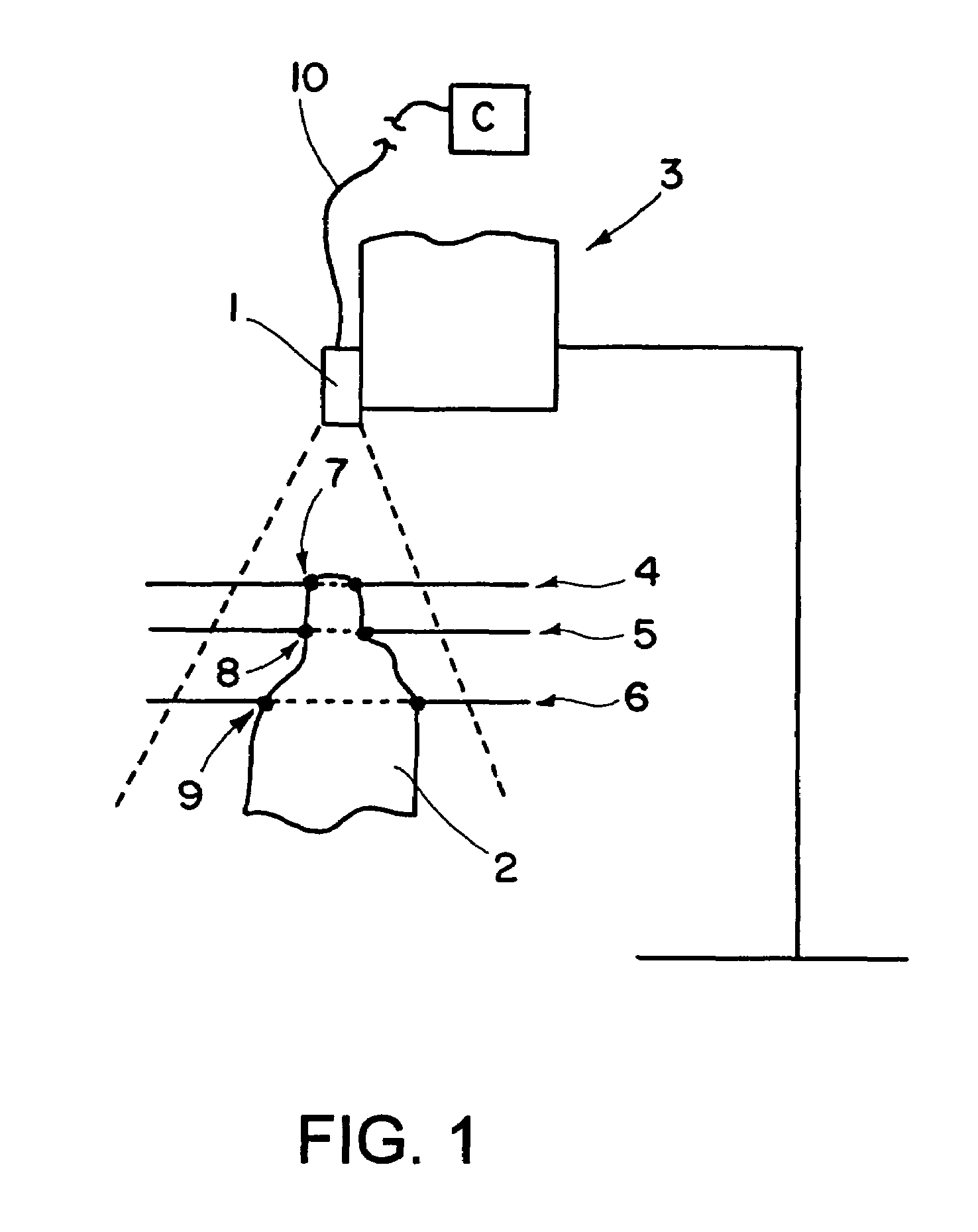Three-dimensional shape detection by means of camera images
- Summary
- Abstract
- Description
- Claims
- Application Information
AI Technical Summary
Benefits of technology
Problems solved by technology
Method used
Image
Examples
Embodiment Construction
[0032]The video camera 1 produces a camera image of the object 2 in the imaging range as represented by the broken line.
[0033]The object 2 has an irregular outer shape. To detect the shape of the object 2, now, for example, one plane after the other is set sharp from the top down by the changing, more particularly by automatically changing the focussing distance of the camera 1. In the drawing, three planes 4, 5 and 6 are shown by way of example, each of which is accessed in sequence. Of course, in reality a far greater number of planes is accessed in mapping the shape, i.e., as many as is required to precisely map the shape of the object. Where highly complicated object shapes are involved, the number of focussing planes may also be automatically increased in defined distance ranges.
[0034]In accessing the planes 4, 5 and 6, as shown in the Figure, an outline of the object appears sharp in each case, this outline being represented in the drawing for the corresponding planes dotted i...
PUM
 Login to View More
Login to View More Abstract
Description
Claims
Application Information
 Login to View More
Login to View More - R&D
- Intellectual Property
- Life Sciences
- Materials
- Tech Scout
- Unparalleled Data Quality
- Higher Quality Content
- 60% Fewer Hallucinations
Browse by: Latest US Patents, China's latest patents, Technical Efficacy Thesaurus, Application Domain, Technology Topic, Popular Technical Reports.
© 2025 PatSnap. All rights reserved.Legal|Privacy policy|Modern Slavery Act Transparency Statement|Sitemap|About US| Contact US: help@patsnap.com


